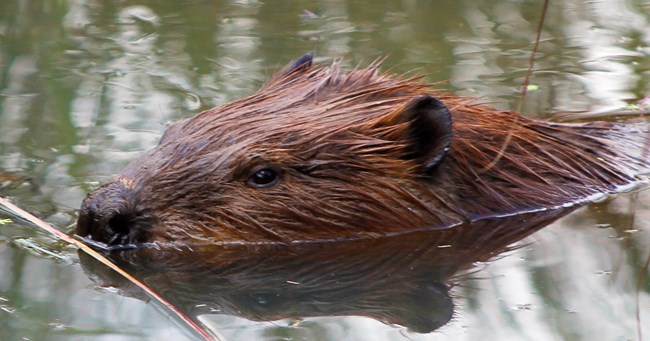
NPS Photo Busy as BeaversAuthor: Ranger Julie Larsen Where does the beaver’s instinct to plug up moving water come from? I’m not sure, but I do know it is strong. My first encounter with this busy mammal was breaking up its dams in order to allow canoes to pass from one lake to another in northern Wisconsin for our weekly family canoe trips. I frequently had to abandon my canoe to stand on this incredibly strong structure and dismember some of its top layer to allow water flow, while at the same time cursing its landscape engineering skills. As a park ranger at Indiana Dunes National Park, while I enjoy seeing beavers, its busy characteristics can make for some unhappy neighbors missing their trees. And so I ask myself, "Just how many beavers are too many beavers? And do we now have too much of a good thing?" Once numbering in the hundreds of millions across the United States, this is one rodent able to persist. In the early 1800s, its desirable inner fur was made into stylish top hats that fueled the fur trade at Joseph Bailly’s fur trading post, part of our national park. I marveled at how the Potawatomi hunted these water-loving creatures and after trading its own hide for steel traps, could bring even larger numbers of hides to Joseph’s post. With a relatively low reproduction rate of one to four kits per year, it was extirpated by the end of the fur trade–gone from the state of Indiana for the last 100 years–but still surviving elsewhere in our country. Today, populations have recovered and scientists at the national park are reviewing options to mitigate any unacceptable beaver impacts that might warrant further study and/or an environmental assessment. Beaver dam construction begins by plugging up moving water by moving rocks–holding them between their neck and body and placing them at the bottom, then adding sticks, mud, and vegetation to the other side. Soon, water no longer flows, and a pond is created. If a leak is heard with this surprisingly well-developed sense, it is repaired immediately. Dam repair is easy for this rodent, who like all other rodents, must chew constantly to keep their choppers sharp and not too long, as their teeth grow every day of their 10- to 12-year average lifespan. Other animals, including waterfowl, benefit from the additional pond space created by the beaver’s waterfront construction project. Once the dam is built, a cozy lodge is next. When we are looking at a lodge, I tell students that it is just like a house, except the doors are underwater. It has a kitchen, a bedroom, a living room with a chimney, and even a bathroom in an open-concept design. Inside the all-stick lodge, it is dry and the beaver can waterproof its fur by combing in some waterproofing oil and a powerful scent from under its flat tail. Using their flexible hind toes, it also combs out any burrs and parasites. The Indiana Department of Natural Resources released some beaver back in the area in the 1970s, and today it can be found thriving in both the state and national parks. This predator-free real estate is attractive for the beaver’s return. Coyote, fox, and aerial predators somewhat limit their numbers these days, but wolf, black bear, fisher, otter and cougar are extirpated, just like the beaver once was. If you venture out at dawn or dusk along some of our waterside trails, such as the Little Calumet River or Miller Woods trails, you might catch a glimpse of North America’s largest rodent stirring to begin work. Spend that moment to appreciate the beauty and resiliency of this mammal. If you are detected, a tail-slap word of warning to family members and other beavers of your intrusion will ring out. The gig is up. |
Last updated: July 14, 2020
